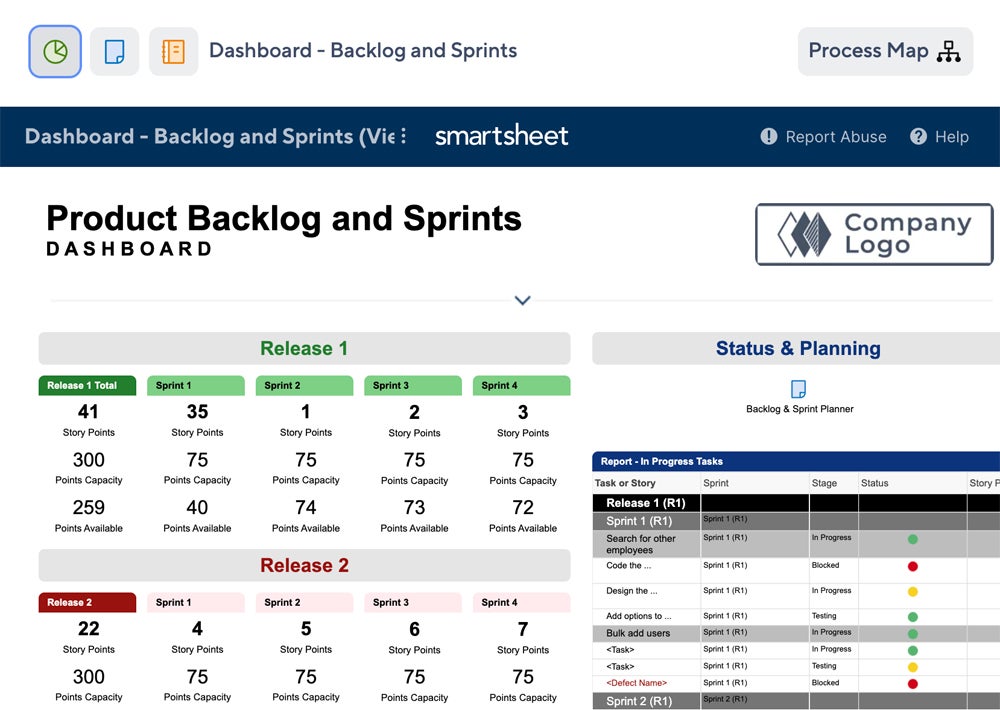The Ultimate Guide to Agile Project Management
Agile is a popular approach to project management that prioritizes flexibility, short work sprints, and gathering feedback. Agile project management encompasses many specific methodologies. In this guide, we explore the pros and cons of agile, how to implement it, and the five phases of agile project development.
1 monday.com
Employees per Company Size
Micro, Small, Medium, Large, Enterprise
Features
Agile Development, Analytics, API, and more
2 Wrike
Employees per Company Size
Micro, Small, Medium, Large, Enterprise
Features
Agile Development, Analytics, API, and more
3 Quickbase
Employees per Company Size
Micro, Small, Medium, Large, Enterprise
Features
Agile Development, Analytics, API, and more
What is agile project management?
Agile is an iterative approach to project management that focuses on continuous deliverables, incremental progress through sprints, and frequent gathering of customer feedback. Agile is known for its flexibility and effectiveness, making it a popular choice for different teams and projects.

Benefits and drawbacks of agile project management
| Benefits of agile project management | Drawbacks of agile project management |
|---|---|
| Highly flexible, adaptable to different projects and teams | Lack of documentation can cause challenges later |
| Constant feedback leads to quick issue resolution | Scope creep may occur due to vague parameters |
| Faster turnaround times for quicker deployment | Unpredictability can lead to stress for team members |
| Reduced bureaucracy for more focus on value-added tasks | No clear deadlines or project end |
| Multiple methodologies to choose from | Difficulty in predicting final costs |
How to implement agile project management
Implementing agile for the first time requires proper planning and execution. Here are some expert tips to guide you:
Fill knowledge gaps before starting
Understand agile methodologies before diving in.
Determine if agile is suitable
Assess project requirements and team structure for compatibility with agile.
Choose a specific agile methodology
Select a methodology such as scrum, kanban, XP, or lean, and follow it diligently.
Get buy-in from stakeholders
All involved parties should be informed and agree to proceed with agile.
Form an agile team
Consider bringing in certified agile experts to assist in implementation.
Create a plan for a small project
Start with a simple project before advancing to complex ones.
Choose the right agile tools
Utilize appropriate software for agile project management.
Regularly check in with the team
Solicit feedback from team members to address issues promptly.
Conduct a post-project retrospective
Review the completed project to identify successes and areas for improvement.
Agile vs waterfall project management
Agile and waterfall project management differ significantly in their approaches and methodologies. The key distinctions include:
- Waterfall follows sequential phases, while agile works in iterations
- Waterfall sets strict deadlines, budgets, and requirements upfront
- Roles are fixed in waterfall, while agile promotes collaboration and adaptability

The five phases of agile project management
Agile project management consists of five adaptable phases:
- Envision
- Speculate
- Explore
- Adapt
- Close
Agile methodologies
Popular agile methodologies include:
- Scrum – based on sprints
- Kanban – visual work management
- XP – focuses on speed and quality
- Lean – emphasizes efficiency

Agile project management principles
Agile management is guided by four values and 12 essential principles outlined in the Agile Manifesto. The principles include:
- Customer satisfaction through early software delivery
- Embracing changing requirements for competitive advantage
- Regular delivery of working software with short timescales
- Continuous collaboration between business people and developers


